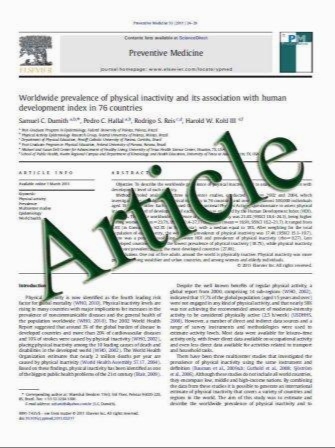Randomized phase III trial of adjuvant epirubicin followed by cyclophosphamide, methotrexate, and 5-fluorouracil (CMF) versus CMF followed by epirubicin in patients with node-negative or 1–3 node-positive rapidly proliferating breast cancer
- نوع فایل : کتاب
- زبان : انگلیسی
- مؤلف : Dino Amadori Rosella Silvestrini Mario De Lena Francesco Boccardo Andrea Rocca Emanuela Scarpi Francesco Schittulli Mario Brandi Rober
- چاپ و سال / کشور: 2010
Description
Adjuvant cyclophosphamide, methotrexate, and 5-fluorouracil (CMF) have proven highly effective in rapidly proliferating breast cancer (RPBC). It has also been seen that sequential administration of doxorubicin and CMF is superior to their alternation, especially in indolent tumors. In a phase III study, we evaluated whether adjuvant epirubicin (E) followed by CMF is superior to the inverse sequence in RPBC. Patients with node-negative or 1–3 node-positive RPBC (Thymidine Labeling Index[3% or histological grade 3 or S-phase[10% or Ki67[20%) were randomized to receive E (100 mg/m2 i.v. d1, q21 days for 4 cycles) followed by CMF (600, 40, 600 mg/m2 i.v. d1 and 8, q28 days for 4 cycles) (E ? CMF) or CMF followed by E (CMF ? E) or CMF for 6 cycles. From November 1997 to December 2004, 1066 patients were enrolled: E ? CMF 440, CMF ? E 438, and CMF 188. At a median follow-up of 69 months, 5-year OS was 91% (95% CI 88–94) for E ? CMF and 93% (95% CI 90–95) for CMF ? E, with adjusted hazard ratio of 0.88 (95% CI 0.58–1.35), and DFS was 80% in both arms, with adjusted hazard ratio of 0.99 (95% CI 0.73–1.33, Cox model). Adverse events were similar, apart from a higher rate of neutropenia in the CMF ? E arm. No important differences in clinical outcome were observed between the two different sequences, making both a valid option in early breast cancer. Further molecular characterization of the tumors might help to identify subgroups achieving higher benefit from either sequence.
Breast Cancer Res Treat (2011) 125:775–784 DOI 10.1007/s10549-010-1257-5 Received: 4 August 2010 / Accepted: 7 November 2010 / Published online: 4 December 2010 Springer Science+Business Media, LLC. 2010


